Himalayas Strike Again: Deadly Landslide in Nepal
Sun Koshi River is blocked, 156 people are dead, and 10 percent of Nepal’s hydropower capacity is cut off.

Images courtesy of ICIMOD; Photo on left: Narendra R Khanal; Photo on right: Rocky Talchabhadel/DHM One site, two landslides. The photo on the left shows the site above the Sun Koshi River after a small movement of earth in June 2013. On the right, the same site after the devastating landslide on August 2, 2014. The foreground shows the lake that formed behind the landslide dam.
By Brett Walton, Circle of Blue
The deadliest landslide in Nepal in a decade is raising fresh questions about the country’s ability to use the rivers of the Himalayan range to electrify South Asia.
The disaster on August 2 buried 156 people, covered the main highway to China in mud and debris 20 meters deep, and blocked the Sun Koshi River roughly 80 kilometers east of Kathmandu. Water quickly pooled behind the rubble forming a lake that submerged a small hydropower station three kilometers upstream. The lake poses a flood risk for at least 400,000 people in two countries.
The landslide also damaged a hydropower station downstream and cut electrical transmission lines along the valley. In all, nearly 10 percent of the nation’s hydropower capacity, some 67 megawatts, was severed by the landslide, leading to power cuts in the capital and elsewhere in the country of 27 million people.
It is the second time in a year that a mammoth disaster ripped the region’s high mountain passes, causing deaths, vast damage to roads and other infrastructure, and ravaging hydropower installations. In June 2013 wicked flooding in Uttarakhand, an Indian state that lies across Nepal’s western border, killed at least 6,000 people and seriously damaged at least 10 big hydropower projects in operation and under construction. Another 19 small hydropower projects that generate under 25 megawatts were destroyed.
“I’ve been a hydropower skeptic for a long time…This idea that we will become like Arab sheikhs lolling in hydro-dollars is absolute nonsense.”
–Dipak Gyawali,
Nepal’s minister of water resources, 2002-03
Nepal’s Department of Hydrology and Meteorology has not yet determined the cause of the landslide. The region, with its young geology, seismic activity, steep slopes, and intense cloudbursts, has a thick history of earth-moving events. Factors being investigated include seasonal rainfall, road construction in the area, and a slope weakened by previous slides.
Land and water experts, and former government officials, said that the Nepal landslide was a warning to the landlocked country squeezed between the soft slope of the Ganges plain and the spiky pinnacles of the Himalayas. The disaster, they said, should prompt Nepal to reassess its push for large Himalayan hydropower dams.
Optimistic projections estimate that Nepal’s undeveloped hydropower potential is second highest in the world, behind Brazil. Both China and India have cast a hopeful glance at their neighbor’s deep, dammable canyons. Nepal’s energy ministry set a goal in 2010 of building 37,000 megawatts of new hydropower capacity within 20 years, a goal that now looks impossible to achieve after a slow start and just 705 megawatts operating today.
But calamities such as the Sun Koshi landslide could undo these hydropower plans, Dave Petley, a landslide expert at Durham University, told Circle of Blue. Landslides in the Himalayas are growing more frequent and severe as the globe warms and intense rainfall increases, he said, adding that human interventions – such as building roads, tearing down forests, and stripping the soil – magnify the natural hazards.
Others surveying the damage do not see a hydropower kingdom rising in the Himalayan foothills.
“I’ve been a hydropower skeptic for a long time,” Dipak Gyawali, Nepal’s minister of water resources from 2002 to 2003, told Circle of Blue. “Nepal is not rich in hydropower. I don’t know where the hype came in, perhaps from developers. This idea that we will become like Arab sheikhs lolling in hydro-dollars is absolute nonsense.”
A Mountain Falls into a River
Nepal’s unstable terrain and steep river valleys that shudder from earth-moving forces are risky locations for hydropower projects, experts say. These projects could fail in any number of disasters common to this region – earthquakes, landslides, or torrential floods.
Some of those risks were revealed just after sunrise on August 2 when nearly two kilometers of hillside collapsed above the Araniko highway, Nepal’s main road link with China.u on August 5, 2014. In the foreground is the Sun Koshi hydropower station, which was damaged in the landslide.
An engineer for the Bhote Koshi hydropower station, located just upstream, who witnessed the slide, tweeted that “a whole mountain has fallen into the river.”
Dozens of homes were buried. By Wednesday morning 33 bodies had been recovered and 123 people were still missing but assumed dead, according to local news reports.
Scientists with the International Center for Integrated Mountain Development (ICIMOD), a research group based in Kathmandu, are helping Nepal’s Department of Hydrology and Meteorology assess the causes of the landslide.
However, access to the site is difficult and a detailed investigation right now is not likely, said Arun Shrestha, manager of ICIMOD’s river basin program.
Shrestha told Circle of Blue that three main questions must be answered in the next few days: Will the hillside collapse again? What can be done to stabilize the slope? How stable is the landslide dam across the Sun Koshi River?
The nature of the dam, comprised of rock, mud, and sediment, is the greatest concern, Shrestha said.
The Nepali Army is blasting holes in the dam to drain the water. If the dam were to break, the resulting flood, called a bishyari in Nepali, would put as many as 400,000 people at risk. The threat extends beyond national borders. Authorities in India’s Bihar state, more than 200 kilometers downstream on the Kosi River, have evacuated at least 65,000 people.
Landslide Points to Long-term Problems
Landslides are common in Nepal. Shrestha counts 14 major events since 1967. But what is unusual about the Sun Koshi landslide is that it happened in an area with major infrastructure: the Araniko highway and five hydropower stations.
The hydropower stations along the river do not use large dams. Rather, they are small facilities, no more than 45 megawatts, that divert a portion of the river’s flow to generate electricity before returning it to the channel downstream. Still, one station’s diversion pipes were damaged, another was inundated, and the rest are inoperable because of downed transmission lines.
“This is an eye-opener for hydropower,” Shrestha said. “Development has to happen more systematically. Now there is not so much consideration for natural hazards.”
Shrestha mentioned the catastrophic June 2013 floods in Uttarakhand as another example of natural hazards limiting national hydropower plans. But cautious development in Nepal will be easier wished than accomplished, asserted Gyawali, the former water resources minister.
When asked which authorities were responsible for approving hydropower permits, Gyawali scoffed at the question.
“I am afraid these questions arise in your mind conflating Nepal with Norway,” he wrote in an email. “We have a dominating informal sector where policies are made and decisions are taken at the household level. Yes, government has policies. Can they effectively implement it? Well, more easily on the moon than in next-to-inaccessible Nepali hinterlands.”
If the authorities want, the Sun Koshi example can serve as a guide for hydropower development, said Gyawali, who is now research director of the Nepal Water Conservation Foundation.
“These bishyaris keep happening all the time,” Gyawali said, referring to the floods from landslide dams. “Nepal is better off developing small hydropower plants across the country. If we try to build one single plant, we’re putting a larger risk on the table. Many smaller ones cannot all be knocked out.”
Petley, the Durham University landslide expert, said that more research on natural hazards in the Himalayas is needed.
“The Himalayan landscape needs to be managed very carefully,” Petley said. “There is too much indiscriminate development.”
Brett writes about agriculture, energy, infrastructure, and the politics and economics of water in the United States. He also writes the Federal Water Tap, Circle of Blue’s weekly digest of U.S. government water news. He is the winner of two Society of Environmental Journalists reporting awards, one of the top honors in American environmental journalism: first place for explanatory reporting for a series on septic system pollution in the United States(2016) and third place for beat reporting in a small market (2014). He received the Sierra Club’s Distinguished Service Award in 2018. Brett lives in Seattle, where he hikes the mountains and bakes pies. Contact Brett Walton


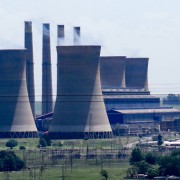
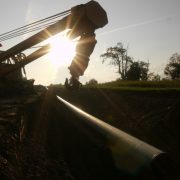
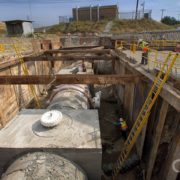
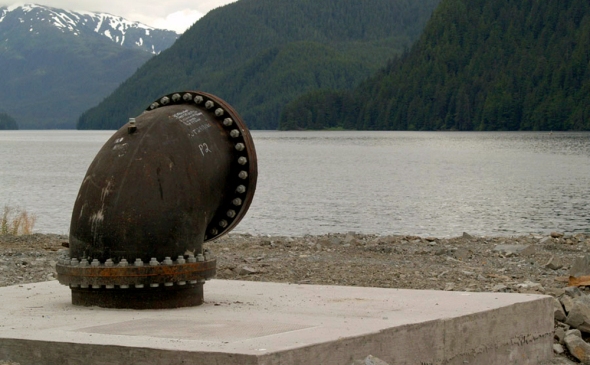
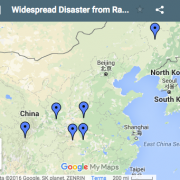

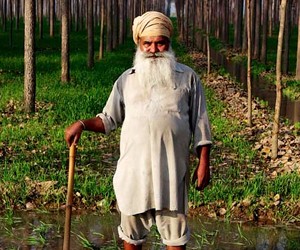

Thanks for reporting this disaster. Flooding from Manilla to Pakistan a severe 2014 monsoon for millions.
the mountain side appears to be denuded of forest cover. how much does this have to do with the landslide???
The beginning of the year’s power plant disaster in a landslide created many orphans in turn totally ignored by the regional. Governments of both India and Nepal.
So much for work safe in these godforsaken countries.it is time that dodgy democracy be recognised by well todo Nations as just a fake facade of civilised practice behaviour.